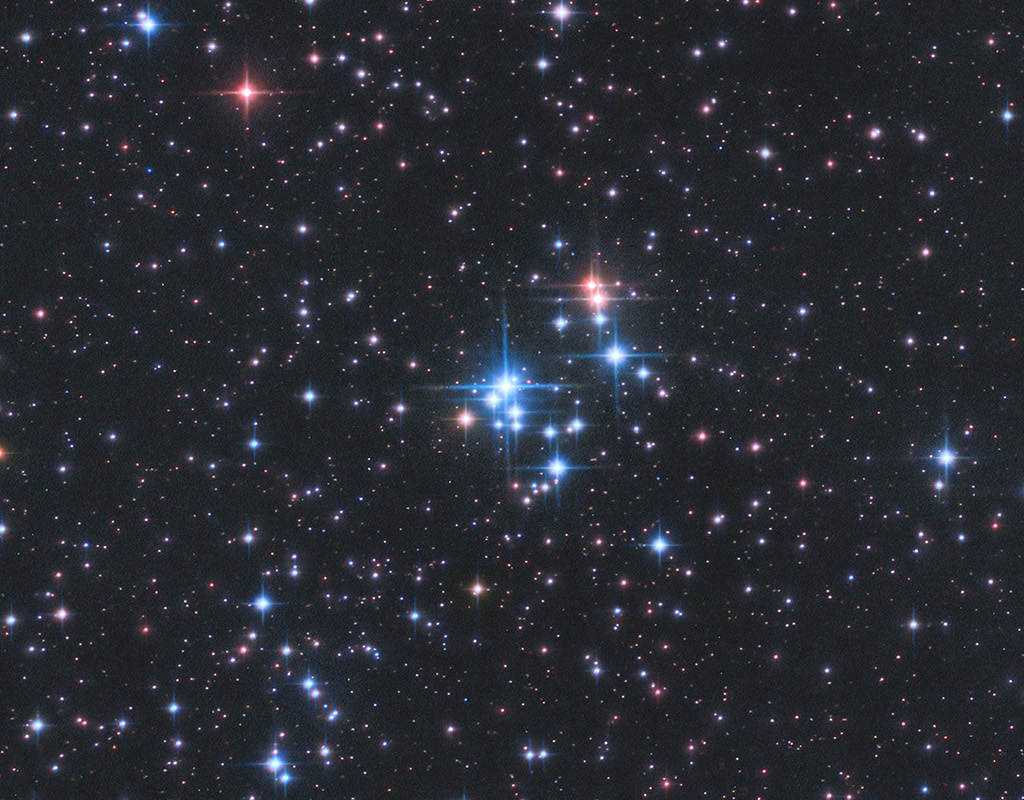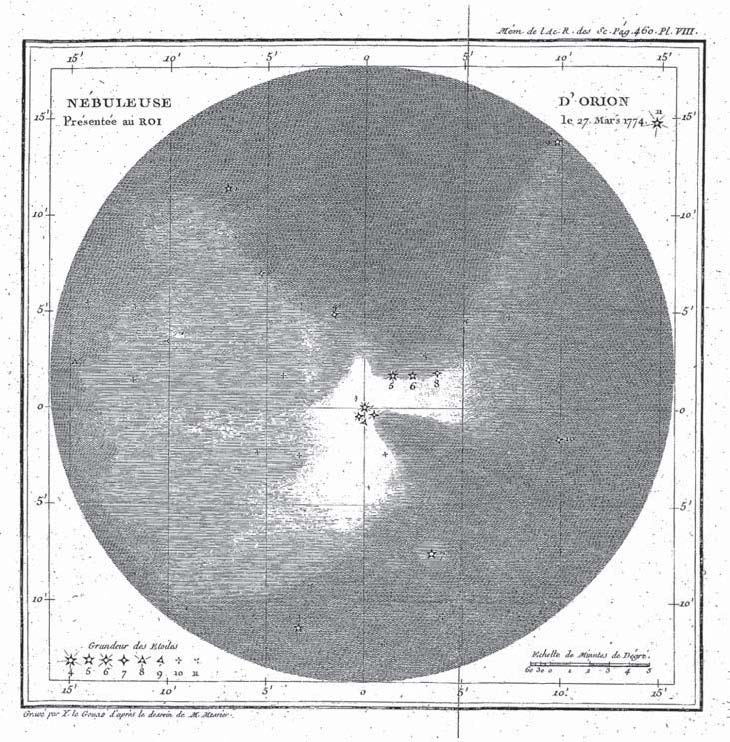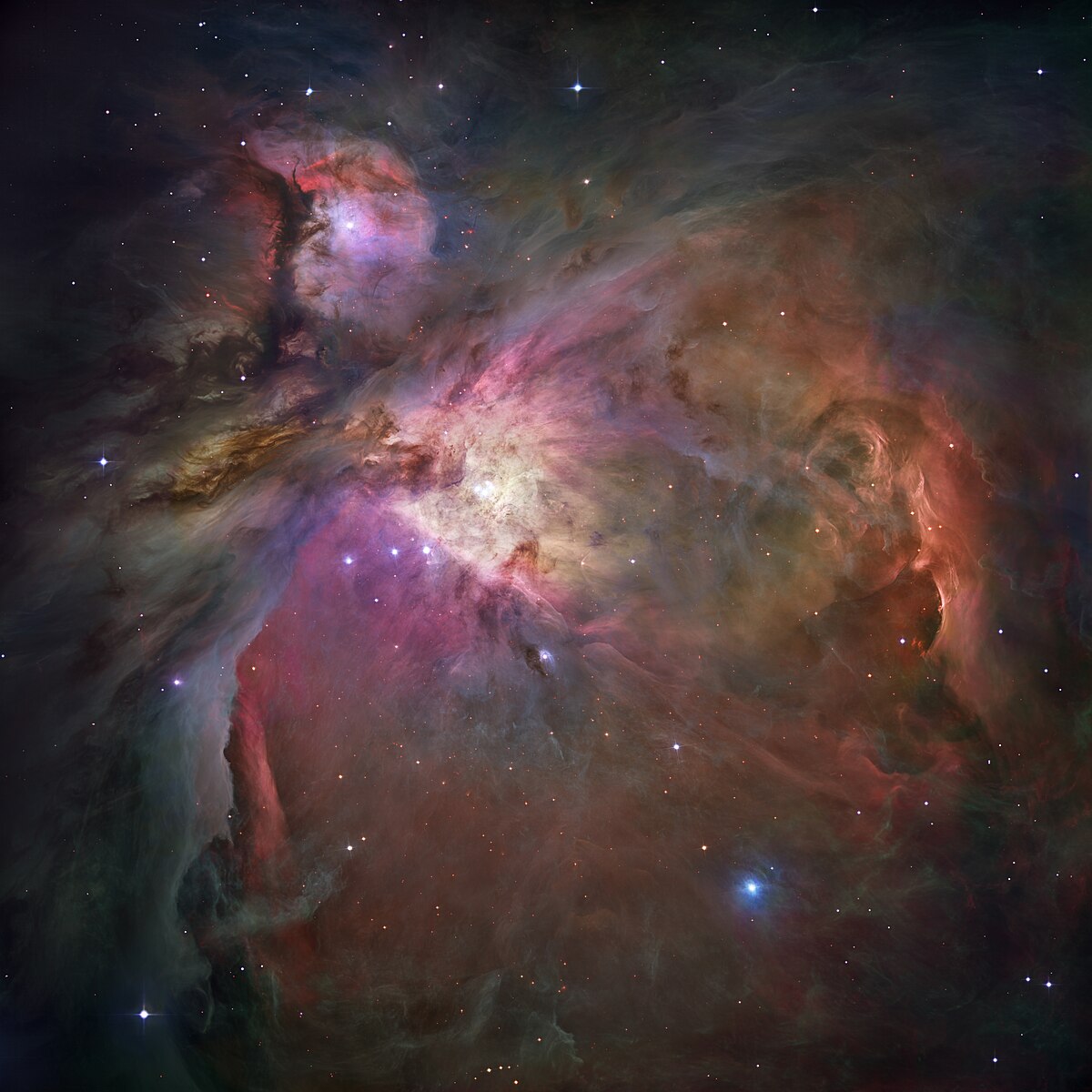Roy wrote: ↑Tue May 14, 2024 12:13 pm
Nowhere in the information supplied do they mention the classification or number of the stars in the cluster. Yet the age of the cluster is estimated to be only 11,668,000 years. Curiously short - and no leftover nebular material.
There is a clue here that tells us that this cluster really
is young, and that is the nature of its brightest star, HD 41943. This is a binary star of spectral classes B0 and B2. B0 is the hottest and most massive of the B-type stars, just below the O stars. So how bright are stars of spectral type B0 typically, if we talk about the main sequence B0 type stars (the B0V stars)? My impression - and mind you, that's my
impression - is that stars of spectral class B0V are often some 800-1000 times brighter than the Sun in visible (yellow-green) light.
Now, stars get more and more luminous as they age, mostly because a larger and larger part of the entire star is involved in the process of fusion as the star ages. If a star of spectral class B is fainter than we typically expect such stars to be, and particularly if they sit inside a nebula, then we have a very good reason to believe that this star is indeed young.
Consider the ionizing star of the Cocoon Nebula, BD+46 3474, a star of spectral class B1V or B0.5V.
According to the paper,
The Cocoon Nebula and its ionizing star: do stellar and nebular
abundances agree? by J. García-Rojas et al., the estimated distance to the Cocoon Nebula and BD+46 3474 is some 800 parsecs. Coupled with the apparent V luminosity of BD+46 3474 of 9.6, that gives us an estimated absolute V magnitude of some 70 solar luminosities. Now, that is too faint, because the star is heavily reddened, but the dust reddening of yellow-green light is not nearly as bad as the dust reddening of blue light and UV light. Let's assume that BD+46 3474 has lost two magnitudes of its V light by dust reddening. Then its true V luminosity would be some 450 solar luminosities in V light. My personal gut feeling guess is that BD+46 3474 is not any brighter than that, and it could well be fainter.
So how old is BD+46 3474? According to Constellation Guide, BD+46 3474 is believed to be only 100,000 years.
Now let's return to the 37 cluster. How far away is its brightest star, binary HD 41943? Unfortunately, Gaia has not measured this star's parallax, but if we use the Gaia parallax of 1.0563 milliarcseconds for another of the 37 cluster's bright blue stars, HD 252214, convert this parallax into a distance of some 946 parsecs, and combine the distance with the apparent brightness of HD 41943, we get an absolute V luminosity for HD 41943 of about a thousand solar luminosities. That sounds reasonable. This star (or stars) is not significantly reddened, so we don't have to worry about compensating for reddening.
Still, HD 41943 is a binary star, and its companion is spectral class B2V. The magnitude of a thousand solar luminosities for HD 41943 is the combined luminosity of both of the components. That means that both components must be main sequence objects, because otherwise they would be definitely brighter, and they may just possibly be a little bit on the faint side for their spectral class. Conclusion: They are young!
But how young? Let's compare HD 41943 with one of my own favorite B0V stars, upsilon Orionis.
Upsilon Orionis and its Orion friends. Image credit: Stanislav Volskiy.
Annotation: Judy Schmidt
Actually, upsilon Orionis is classified as O9.7V, so it is just a little hotter and more massive than HD 41943. All other things being equal, we always expect more massive stars to give off more energy (and thus being more luminous) than less massive stars. According to the Gaia parallax of upsilon Orionis and its apparent V brightness of 4.63, its absolute V brightness is some 1,800 solar luminosities.
And then how old is upsilon Orionis? According to
Wikipedia, it is 4.5 million years old. That makes it young for a star of "almost spectral class B0V but actually spectral class O9.7V", but not extremely young.
HD 41943, or at least the 37 cluster, is estimated to be some 11 million years old. Why not? That sounds reasonable to me.
But why are there red stars in the 37 cluster, if the cluster is so young? I guess it
is possible that the red stars of the 37 cluster were formed a little earlier than the blue stars of the same cluster, so that they have also aged sooner. Another possibility is that HD 41943 is a blue straggler, so that it has "stolen gas" from a companion and thus rejuvenated itself, shining brighter and bluer than it would otherwise have done. Perhaps HD 41943 would have been a red star itself by now if it hadn't managed to swallow some gaseous youth potion. Who knows?
 The 37 Cluster
The 37 Cluster




